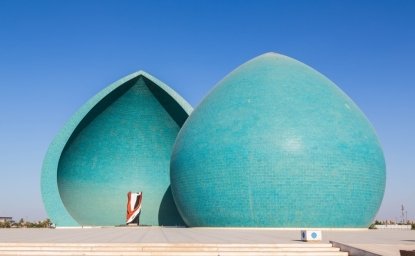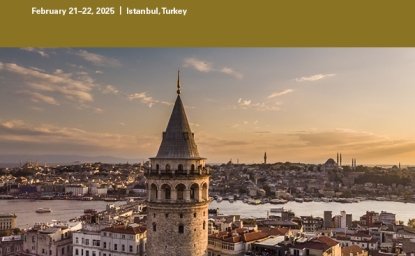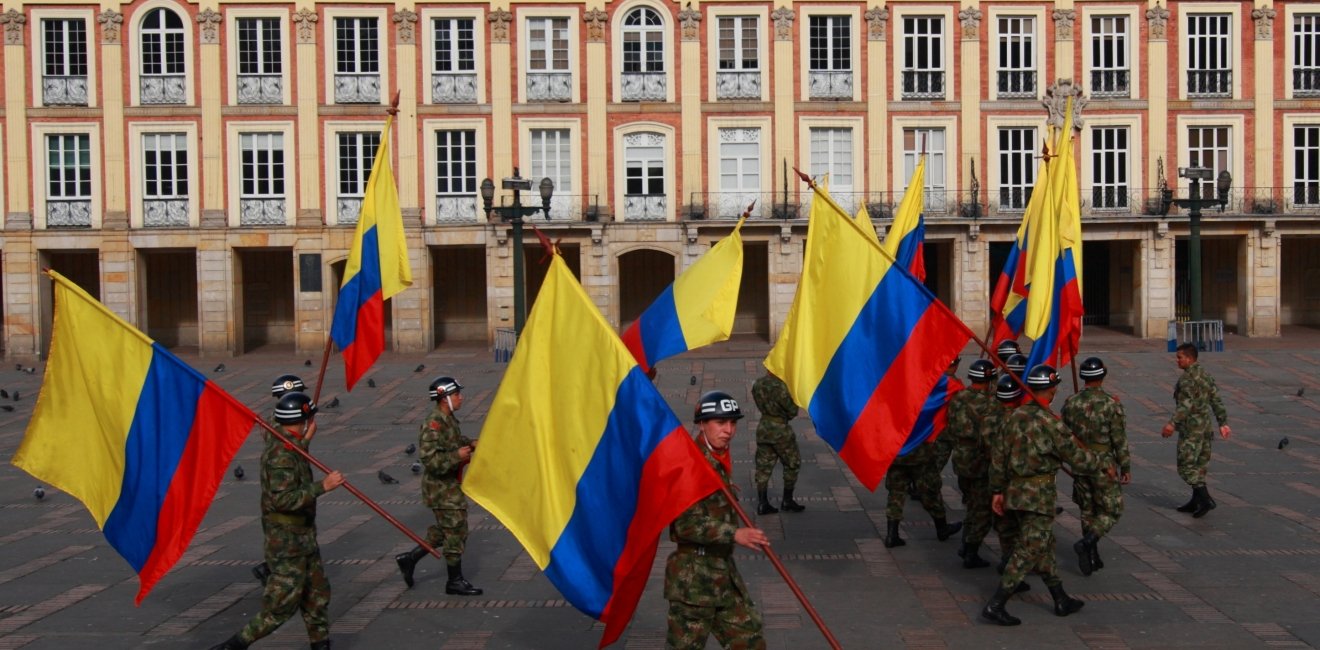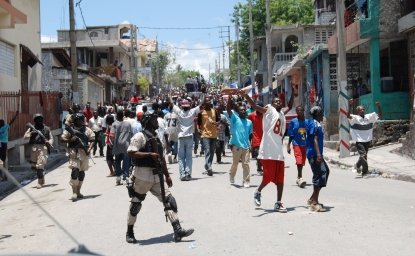This piece was written by LAP Director, Cynthia J. Arnson, and was published in the Cipher Brief. March 23, 2016, the deadline set by the Colombian government and the Revolutionary Armed Forces of Colombia (FARC) for concluding their peace talks, will come and go without fanfare. There will be no signing ceremony, even if the two sides are very close to reaching a final agreement that most observers expect later this year. After close to four years of arduous negotiations that nearly broke down on several occasions, the conclusion of a peace accord with Colombia’s largest guerrilla army will represent a momentous achievement for President Juan Manuel Santos and for Colombia as a nation. But its significance will be quickly overshadowed by the gargantuan security, economic, and political tasks of the post-war era that will stretch—and perhaps exceed—the capacity of the Colombian state in coming years. The political challenges have attracted the most attention but in many ways are the least problematic. The FARC is reviled by most Colombians; while favorable opinions of them have risen slightly as the peace talks have progressed, they have never gone beyond single digits and have mostly hovered around 2-3 percent. Not only have critics challenged the FARC’s legitimacy as an interlocutor capable of reaching binding agreements with the national government, some, most notably former president Álvaro Uribe, have questioned the very legitimacy of the process itself, arguing that the FARC is a terrorist organization on the verge of defeat by the Colombian state, not a political actor with whom the government should strike a deal. A February 2016 Gallup poll revealed that over 70 percent of the Colombia’s urban population believe that the armed forces are capable of defeating the guerrillas, even if they favor dialogue over military action by a 54-38 percent margin. Given the ferocious debate unleashed by Uribe and his allies, and although not required to do so by the Colombian Constitution, Santos pledged early on to submit the final accord to a referendum by Colombian voters. The Colombian Congress, in which Santos allies have a majority, settled on the mechanism of a plebiscite requiring the participation of 13 percent of the country’s registered voters, a mere 4.4 million people in a country of over 46 million. Structured this way, a plebiscite is almost certain to pass provided that it is not found unconstitutional altogether in a challenge pending before Colombia’s Constitutional Court. Meanwhile, Santos’s approval ratings have plummeted in the last two months due to a drought-induced energy crisis and a struggling economy, eroding his political capital in advance of any referendum. The transitional justice provisions of the peace agreement have also been deeply divisive, with domestic and international critics decrying the lack of jail time for FARC members who have committed serious human rights abuses, including war crimes. Notably, however, victims of the armed conflict—there are some seven million officially registered, close to 15 percent of the population—show greater disposition to reconcile with demobilized guerrilla fighters and allow their participation in politics. While urban centers over the course of the war suffered their share of guerrilla abuses, from terrorist bombings to kidnappings, those who bore the brunt of the conflict reside in remote rural areas far removed from the glare of political debates in the major cities. This rural-urban divide and the security, development, and institutional dimensions it poses represent the biggest challenges of the post-war era. Indeed, President Santos said as much when he visited Washington in February, wondering aloud how the Colombian state will fill the vacuum left by the FARC’s demobilization. Despite huge advances in security over the last decade and a half, the state has a precarious presence in areas of the national territory where the conflict has taken place. Establishing its authority throughout the countryside, in both security and social terms, has never been accomplished in Colombian history. “Peace will be built in the territories,” observed an official of the land restitution agency last month. But the Colombian government’s record of execution of elaborate development plans is sketchy at best. Its ability to protect demobilized fighters on a massive scale, where local mafias and corrupt politicians have long held sway, is also uncertain. This despite the stellar record of the Colombian Reintegration Agency (ACR), which has provided vocational, psycho-social, and other forms of support to over 25 thousand guerrilla fighters who have turned themselves in voluntarily, the vast majority of whom are successfully incorporated into civilian life. Colombia has a long history of recycling forms of violence. Many analysts in and out of government suspect that, even as rank-and-file FARC members demobilize, some number of mid-level commanders will refuse to leave Colombia’s lucrative illegal economies—not only narcotics but also, increasingly, the illegal mining of gold as well as coltan. There are no precise numbers, but there is no doubt that former combatants of the paramilitary United Self-Defense Forces of Colombia (AUC), who demobilized during the Uribe administration, form part of the backbone of the bandas criminales (BACRIM) who are active especially along drug trafficking corridors. In 2014, these new paramilitary groups were responsible for 13 massacres in the department of Antioquia alone. According to the United Nations, 36 human rights defenders were killed in 2015 and the circumstances of their deaths still unclear. The Colombian government has yet to announce a strategy against organized crime for the post-war era, but already the debate lines are being drawn, between those who see an active role for the army, marines, navy, and air force, and those who see the effort as principally one for the National Police. The humanitarian and economic aspects of the post-war period are likewise daunting. Colombia has the second highest number of hidden land mines in the world, six million internally displaced, and, according to the human rights NGO DeJusticia, more disappeared than in all of the Southern Cone dictatorships combined. Less than 10 percent of those who registered under the landmark 2011 Victims Law have received compensation. Added to these human costs are the costs of bringing economic development to remote rural zones, which lack basic infrastructure and thus connectivity to markets. Crops such as coffee, cacao, and palm oil trees can be viable but take years to develop from the time of planting to the first harvest, requiring a long-term investment for rural livelihoods to be sustainable. Despite the Santos administration’s unprecedented investment in highway infrastructure, tertiary roads—the kind to reach small rural communities—have largely fallen off the drawing table. The government resources to address the country’s post-war needs face increasing pressure given the precipitous drop in the price of oil. Oil constitutes between 53-57 percent of Colombia’s foreign exchange earnings and contributes over a fifth of national government revenue, not including royalty payments to oil-producing regions. The peso has lost over 50 percent of its value in the last 18 months, delighting exporters but contributing to inflation. Overall economic performance is at three percent growth this year, significantly higher than the regional average, but it is difficult to see how the government will finance the estimated $80-90 billion needed for post-war implementation over the next ten-year period. President Barack Obama will be in Cuba on the target day for signing the peace agreement. Although it is unlikely that he would meet with the Colombian government and FARC negotiators still holed up in a conference room in Havana, he may well offer words of encouragement. Such a gesture would be yet one more sign of the Obama administration’s unequivocal support for the peace talks and their successful conclusion. The real question, however, is whether the United States has the staying power during the next U.S. administration, and the one after that, to help Colombia make good on its commitments. The jury is still out, but the U.S. record following the Central American wars leaves scant cause for optimism.
Author


Latin America Program
The Wilson Center’s prestigious Latin America Program provides non-partisan expertise to a broad community of decision makers in the United States and Latin America on critical policy issues facing the Hemisphere. The Program provides insightful and actionable research for policymakers, private sector leaders, journalists, and public intellectuals in the United States and Latin America. To bridge the gap between scholarship and policy action, it fosters new inquiry, sponsors high-level public and private meetings among multiple stakeholders, and explores policy options to improve outcomes for citizens throughout the Americas. Drawing on the Wilson Center’s strength as the nation’s key non-partisan policy forum, the Program serves as a trusted source of analysis and a vital point of contact between the worlds of scholarship and action. Read more

Explore More
Browse Insights & Analysis
Iraq Should Consider Extending UNAMI’s Mission



